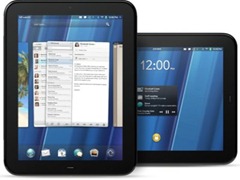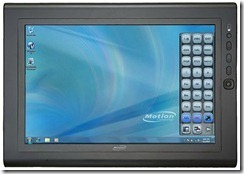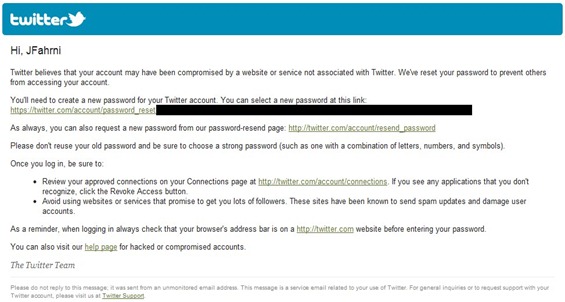The 2012 unSUMMIT will be held on May 2-4, 2012 at the Hyatt Regency Orange County in Anaheim, California. Heck, that’s right in my backyard. Looks like I’ll be attending.
Author: Jerry Fahrni
-
Evaluating my travel technology
My typical travel gear includes:
Lenovo T410S Laptop or Lenovo x201t Tablet PC – I go back and forth between these two machines. The T410S has a bigger screen, faster processor and more memory, but it’s not a tablet PC. The x201t is smaller, easier to use and I can take notes directly on the screen. The smaller size is especially important when I have a long flight; the T410S doesn’t fit well in the cattle-car seats on planes.
Motorola DROID – I love this phone and haven’t seen anything new to convince me to change, although I think I’ll have a Motorola DROID BIONIC shortly.
Kindle DX – Still nothing better than an e-ink screen for reading. Period. When I see a journal article worth reading I simple dump it in a “To Read†folder on my computer. Every so often I move those on to my Kindle DX and read them when I have down time. The DX’s large screen works well for PDFs.
Android Tablet (my rooted NOOK Color) – Games, email and social media in a small package with long battery life.
Verizon MiFi, a.k.a. “Mobile Hotspot†– Simply can’t live without connectivity
I recently purchased an HP TouchPad. It’s turned out to be a really nice tablet. I’ve enjoyed using it over the past few weeks.
On a recent trip to Cincinnati, OH I decided to leave my Kindle DX and Android tablet at home, and take the TouchPad instead. I used it for email, web surfing, social media and games; just like its Android counterpart. I tried using it for reading in place of the Kindle DX. It worked, but found that I like the e-ink screen better.
I’ve heard people say they use their tablets, specifically their iPads, for document creation, editing, etc. I managed to use the TouchPad to compose a blog post for another website while en route to Cincinnati, but I wouldn’t recommend doing it on a regular bases. Sure, I was able to create the post, but there were several things I missed. I’m not a natural writer and many of my blog posts go through several edits before getting pushed to the web. In my opinion a keyboard and mouse work better than a touchscreen for editing a document. Overall it worked, but certainly not as good as a laptop.
So, what’s the final verdict? The TouchPad could easily take the place of my Android tablet and my Kindle DX, but I still prefer the Kindle for reading. And you can forget about using something like the TouchPad in place of a laptop, it’s not even close.
-
Pharmacists impact on osteoporosis management (review article)
Pharmacists are pretty good at helping people with chronic medical conditions manage their medications, hence the term Medication Therapy Managment (MTM). You can find more information about MTM at the American Pharmacists Association (APhA) website.
Anyway, I came across an article this morning that gives the results of a literature review “to examine the impact of pharmacist interventions in improving osteoporosis management“. While I’m not a big fan of review articles in general because the information can be skewed, I found the conclusion to my liking. The articles concludes that “[d]ata support the potential role for pharmacists to help reduce gaps in osteoporosis management through improved identification of high-risk patients.” And then the article goes on to say that more research is needed. I personally think it’s time to move beyond the research stage and start integrating MTM into the care of all patients. It should be the standard.
.
-
Johns Hopkins ABX Guide for Android
 Once upon a time I used to use the Johns Hopkins ABX Guide on my trusty Palm Pilot. I thought the guide was well done, easy to use, accurate and full of great information. The application has come a long way since then and is now available for the Android OS. While it’s no longer free – actually is fairly pricey at $22.99 – it looks to be of similar quality in both design and information. The reviews on the Android Market tend to agree.
Once upon a time I used to use the Johns Hopkins ABX Guide on my trusty Palm Pilot. I thought the guide was well done, easy to use, accurate and full of great information. The application has come a long way since then and is now available for the Android OS. While it’s no longer free – actually is fairly pricey at $22.99 – it looks to be of similar quality in both design and information. The reviews on the Android Market tend to agree.Description
Johns Hopkins ABX Guide: Diagnosis and Treatment of Infection Diseases
The Johns Hopkins ABX Guide, Mobile Edition continues to provide current, authoritative, comprehensive information on anti-microbial agents, infectious diseases, and commonly-encountered pathogens in one portable volume. Written by experts at the world-renowned Johns Hopkins University School of Medicine, this must-have resource features expert recommendations, clinical and diagnostic decision-making tools, and drug-to-drug interactions. Concise, thorough, and current, The Johns Hopkins ABX Guide, Mobile Edition is designed for quick reference and comprehension. Information is featured in an easy-to-access format that facilitates rapid application of knowledge at the point of care.
12 month subscription includes content and feature updates.
-
What do pharmacists want?
 It’s a simple question with a simple answer. In today’s pharmacy environment pharmacists want to do more “clinical†activities and distance themselves from the physical pharmacy. See, I told you it was simple.
It’s a simple question with a simple answer. In today’s pharmacy environment pharmacists want to do more “clinical†activities and distance themselves from the physical pharmacy. See, I told you it was simple.For the last several months I’ve been listening to people tell me what pharmacists, and pharmacies, want. I find it interesting that most of the opinions differ from mine. No big deal as opinions are opinions, remember? But today I had a brief, albeit passionate discussion over what pharmacists want. The people telling me what pharmacists wanted weren’t healthcare professionals. They were engineers, sales people, etc. I know that comes off a bit elitist, but it’s not. I don’t pretend to know what an engineer knows, so perhaps they shouldn’t pretend to know what I know. Fair? I think so.
-
Better late than never, a week with my HP TouchPad
 Since HP announced that it would discontinue operations with the webOS and kill off the TouchPad I’ve been scouring local stores and online retailers looking for one. I was willing to buy one for $299 just a few weeks ago so why wouldn’t I be willing to purchase one for half that? Anyway, I stumbled across one at dynamism.com and instantly ordered it. It arrived last week.
Since HP announced that it would discontinue operations with the webOS and kill off the TouchPad I’ve been scouring local stores and online retailers looking for one. I was willing to buy one for $299 just a few weeks ago so why wouldn’t I be willing to purchase one for half that? Anyway, I stumbled across one at dynamism.com and instantly ordered it. It arrived last week. I’ve had a little less than a full week to play with the TouchPad, but I have to say that the user experience is top notch. The card view and ability to move between multiple applications quickly is great. The universal inbox and calendar work like a charm, and the notification system is second to none; including Motorola’s system on their Droid series. Of course applications for the device are scarce, but I’ve been able to scrape together enough to make the device useful and fun.
Overall I think the device is great. It’s a shame that HP killed it without giving it an opportunity to mature and develop a following. I personally prefer the interface of the TouchPad to that of the iPad and would say it’s at least on par with the Android tablets I’ve used; the potential is better. I haven’t experienced any significant problems with the device, but I’ve only had it a short time. The biggest issue for me is the lack of applications. I’d be hard pressed to use the TouchPad for more than email, calendar and web surfing. Then again, with the addition of games that’s about all I use my FrankenNook for these days.
Let’s hope someone decides to take the webOS from HP and continue to develop it. It would be a shame to see something with so much potential die.
-
Bacteria everywhere run scared as vancomycin gets new life
 medGadget: “Scientists from the Scripps Research Institute have successfully reengineered vancomycin. They have reported their findings in the Journal of the American Chemical Society. This research could be a solution in the treatment of patients infected with highly resistant bacteria. Vancomycin is often considered the antiobiotic of last resort, if other antibiotics have failed to do the job. But the emergence of vancomycin-resistant bacteria is becoming a major health problem. Vancomycin works by binding the D-alanyl-D-alanine terminal dipeptide of peptidoglycan precursors, used by bacteria for constructing their cell walls. By binding it, the bacteria can not use the peptidoglycan anymore and they die. But certain bacteria have altered their peptidoglycan by replacing an amide with an ester, resulting in vacomycin resistance.
medGadget: “Scientists from the Scripps Research Institute have successfully reengineered vancomycin. They have reported their findings in the Journal of the American Chemical Society. This research could be a solution in the treatment of patients infected with highly resistant bacteria. Vancomycin is often considered the antiobiotic of last resort, if other antibiotics have failed to do the job. But the emergence of vancomycin-resistant bacteria is becoming a major health problem. Vancomycin works by binding the D-alanyl-D-alanine terminal dipeptide of peptidoglycan precursors, used by bacteria for constructing their cell walls. By binding it, the bacteria can not use the peptidoglycan anymore and they die. But certain bacteria have altered their peptidoglycan by replacing an amide with an ester, resulting in vacomycin resistance.The reengineered vancomycin can bind the altered peptidoglycan and kill the bacteria once again using the same mechanism as described above. But besides binding the altered peptidoglycan, this new antibiotic can bind the original peptidoglycan as well. It took Dale L. Boger and his team some serious chemical engineering to redesign vancomycin into this new antibiotic. In the article down below you can read the report how they managed to synthesize this altered antibiotic and exchange a single atom in the vancomycin to reinstate its antimicrobial activity.â€
Vancomycin is an oldie, but a goodie. It continues to be useful despite its age. Several drugs have been developed over the years to replace it, but for one reason or another the newer agents tend to fall out of favor. With that said, vancomycin won’t last forever as bacteria are slowing finding ways to combat its mechanism of action. So instead of finding a new drug, someone decided to alter the old one. Go figure.
-
Is the Motion J3500 still the best Win-Slate on the market?
 To borrow a phrase from Tommy Lee Jones in The Fugitive, I’ve been doing a “hard-target search†recently for a new tablet PC. Don’t get me wrong, I love my Lenovo x201 Tablet PC, but I really want to try another slate.
To borrow a phrase from Tommy Lee Jones in The Fugitive, I’ve been doing a “hard-target search†recently for a new tablet PC. Don’t get me wrong, I love my Lenovo x201 Tablet PC, but I really want to try another slate.In my mind the ASUS Eee Slate EP121 (who comes up with these names?) is currently the best tablet PC slate on the market. I’ve spent quite a bit of time messing around with it at the Microsoft Retail Store at Bellevue Square in Washington. The employees in there must think I’m some kind of stalker.
As far as the EP121 goes the inking is great, the touchscreen responsive, it’s fast, it’s the perfect size and it just “feels right†in my hands. So what’s the problem? The battery life is terrible? The information on the tablet states that the battery life is less than 3 hours. Online reviews have it at about 2 hours. That’s ridiculously bad in this day of hi-tech.
I looked hard at the Motion Computing CL900, but just don’t think it has enough muscle for me. It’s a bit slow and clunky. That’s a bummer as on the surface the CL900 looks like the perfect device.
While rummaging around the Motion Computing website for information on the CL900 I stumbled across an old friend, the Motion J3500. I’ve used it’s predecessor, the J3400 before and it was a great machine. I found the J3400 to be a good mix of functionality, toughness and battery life. With upgrades to the hard drive, processor and display the J3500 may just be the best option currently available, which says something about the tablet market; the J3500 is over a year old.
-
Not everyone’s opinion should count
Contrary to what your mom told you as a kid, not everyone’s opinion should count.
There are several definitions for the word opinion. The one I like comes from Merriam-Webster and reads “belief stronger than impression and less strong than positive knowledgeâ€. Opinions are beliefs; something you think. They are not rooted in fact – although facts can play a roll in forming an opinion – nor are they required to be acknowledged by anyone other than the one giving the opinion. You have your opinion and I have mine. What if they’re different? No matter because they’re opinions.
Where we get ourselves in trouble is when we start thinking of one’s opinion as fact, or something close enough to fact that is must be acted upon. I frequently see this when someone with “expert†stamped on the end of their name says something like “you should …†or “why don’t you …â€. Instead of evaluating statements like these and thinking them through many people will simply accept them as fact and act on them. This is a bad thing. Why? Because everyone has an opinion and they don’t often line up with each other. This is especially true in healthcare; pharmacy in particular.
 We have a habit of taking an idea, passing it around the table, collecting opinions and making every attempt to act on them all. I see this a lot with automation and technology. Hey, I’m all about functionality, but not at the expense of common sense. When you try to incorporate everyone’s opinion into a product you get the object to the right. I’m sure someone thought this was a good idea; someone must have requested all that functionality, right? Sure. It’s the most functional piece of utility equipment in the history of mankind, but practical it is not. Try putting it in your pocket. This is what many pieces of pharmacy automation and technology turn into once everyone’s opinion is taken into account.
We have a habit of taking an idea, passing it around the table, collecting opinions and making every attempt to act on them all. I see this a lot with automation and technology. Hey, I’m all about functionality, but not at the expense of common sense. When you try to incorporate everyone’s opinion into a product you get the object to the right. I’m sure someone thought this was a good idea; someone must have requested all that functionality, right? Sure. It’s the most functional piece of utility equipment in the history of mankind, but practical it is not. Try putting it in your pocket. This is what many pieces of pharmacy automation and technology turn into once everyone’s opinion is taken into account.This goes doubly when people start suggesting that something needs to be added secondary to safety; “that should be added because it’s a safety issueâ€. Ah, the battle cry of those that know their opinion can’t stand up to close scrutiny. I get this one all the time. I suppose walking around in a suite of chainmail armor and driving 25MPH on the freeway would be safer than the way we do things now, but I just don’t see that happening anytime soon. It’s just not practical. And at the most basic level we give up the marginal difference in safety for the efficiency and practicality of wearing jeans and t-shirts while driving 70MPH. It’s a matter of compromise between form, function and usability combined with taking a little responsibility for our actions.
You simply can’t replace human responsibility and accountability with automation and technology. We need people to be responsible for their actions. It’s the only thing that keeps us honest. Without it everyone’s life will be like Phil Connor’s (Bill Murray) in Groundhog Day before he figured it all out.
